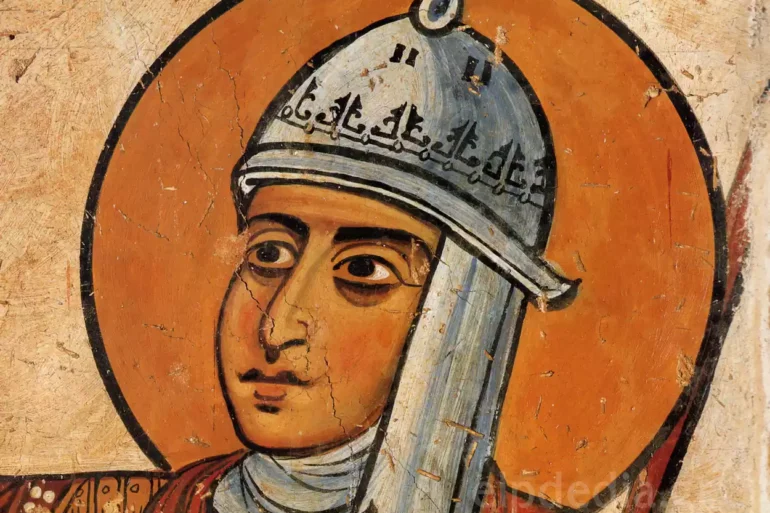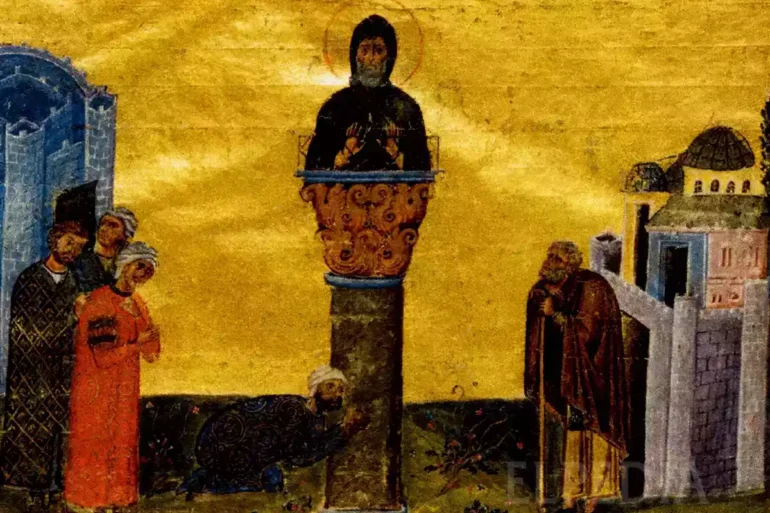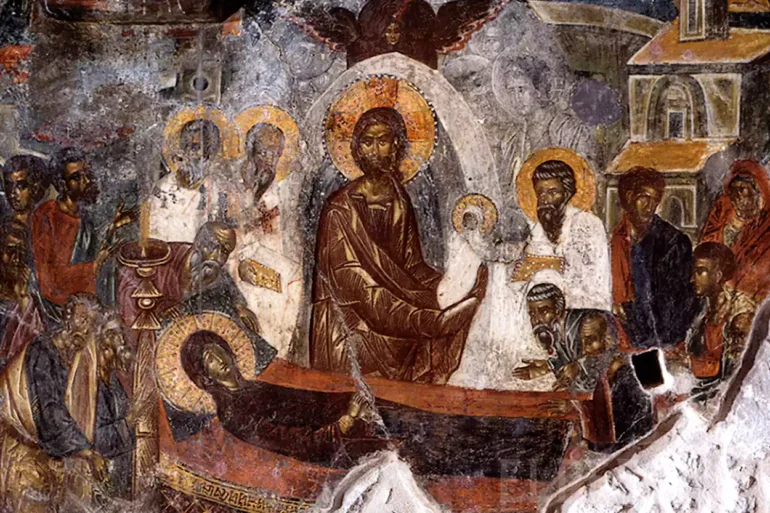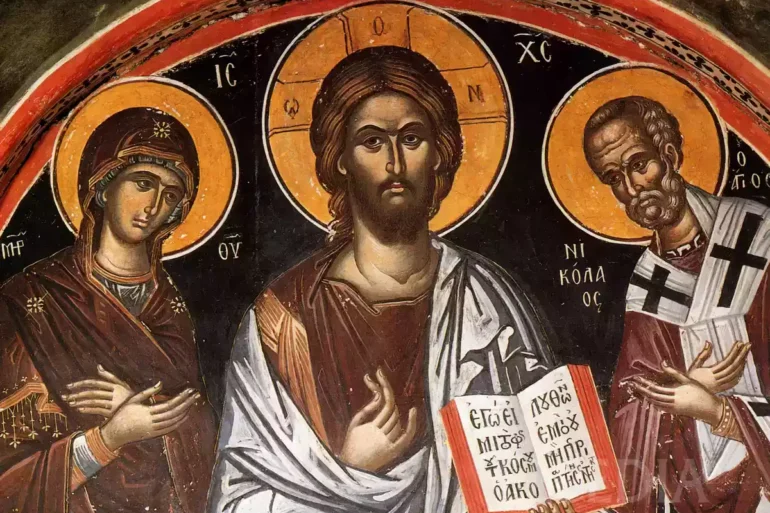The fresco of Joshua at the Monastery of Hosios Loukas is a unique example of Byzantine art from the 10th century.
Meet Saint Simeon, the pioneering stylite ascetic of Syria, through the Byzantine illustration of the Vatican Menologion.
The portable icon of the Saints of the Philotheou Monastery (1845) is a valuable monument of the Athonite iconographic tradition.
The fresco of the Dormition of the Theotokos in Valsamonero, Crete, is an exceptional example of 15th-century Byzantine art.
The Supplication of Theophanes Strelitzas, a masterpiece of post-Byzantine art that combines tradition and innovation at the Stavronikita Monastery.
The Panagia Arakiotissa is an exceptional example of 12th-century Byzantine art in Cyprus, with unique theological symbolism.
The mural "Christ Praising the Widow's Mite" at the Monastery of Chilandar is an exceptional example of Palaiologan art.
The mural of Justinian II in Saint Demetrios depicts the triumphant entry of the emperor into Thessaloniki in the 7th century.
The Enthroned Virgin Mary "Lady of the Angels" of Corfu is an exceptional example of post-Byzantine art from the early 16th century.
The Sinai triptych with the Holy Mandylion is an excellent example of the classicizing style of the 10th century.
The fresco of the Deposition in Nerezi (1164) is an excellent example of Byzantine art during the Komnenian period.
Title: The Dormition of the Virgin Artist: Doménikos Theotokópoulos Type: Portable icon Date: Before 1567 Dimensions: 61.4 x 45 cm Materials: Egg tempera and gold on wood Location: Metropolitan Church of the Dormition of the Virgin, Ermoupoli, Syros
The Dormition of the Virgin by Theotokópoulos (El Greco) is one of the most important early works of the artist during his Cretan period. The work was created before his departure for Venice in 1567 and reflects his excellent training in the Cretan painting tradition. The [...]










